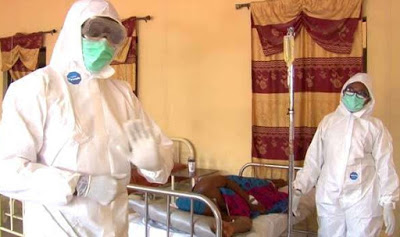The Nigeria Centre for Disease Control revealed that no fewer than 98 persons have died from Lassa fever from January 1 to February 27, 2022.
The agency in its latest situation report noted that the number of new confirmed cases in week 8 was 90 from Ondo, Edo, Bauchi, Gombe, Kogi, Ebonyi, Taraba, Enugu, Oyo, Benue, Plateau states, and the Federal Capital Territory.
It added that the total confirmed cases is now 540 from 79 Local Government Areas in 21 states, which are Ondo, Edo, Bauchi, Benue, Ebonyi, Taraba, Kogi, Enugu, Oyo, Gombe, Nasarawa, Plateau, Delta, Kaduna, FCT.
Other states with confirmed cases are Adamawa, Niger, Anambra, Kano, Katsina, Cross-River states.
The states with the reported case fatalities are Ondo, Edo, Bauchi, Benue, Ebonyi, Taraba, Kogi, Enugu, Oyo, Gombe, Nasarawa, Kaduna, Anambra, Kano, Katsina, and Cross-River.
The report also shows that five new healthcare workers from Bauchi state were affected in the reporting week eight.
“Of all confirmed cases, 73 per cent are from Ondo (32 per cent), Edo (24 per cent), and Bauchi (17 per cent) states.
“The predominant age-group affected is 21-30 years (Range: 1 to 80 years, Median Age: 30 years). The male to female ratio for confirmed cases is 1:0.8.
The number of suspected cases has increased compared to that reported for the same period in 2021,” NCDC said.
NCDC also noted that 559 persons are currently undergoing treatment at treatment centres across the country, while 38 healthcare workers have been affected so far.
According to the World Health Organisation, Lassa fever is an acute viral haemorrhagic illness caused by the Lassa virus, a member of the arenavirus family of viruses and humans usually become infected with the Lassa virus through exposure to food or household items contaminated with urine or faeces of infected Mastomys rats. The disease is endemic in the rodent population in parts of West Africa.
Lassa fever is known to be endemic in Benin, Ghana, Guinea, Liberia, Mali, Sierra Leone, Togo, and Nigeria, but probably exists in other West African countries as well.
“Person-to-person infections and laboratory transmission can also occur, particularly in health care settings in the absence of adequate infection prevention and control measures.
“Diagnosis and prompt treatment are essential. The overall case-fatality rate is one percent. Among patients who are hospitalised with severe clinical presentation of Lassa fever, case fatality is estimated at around 15 percent. Early supportive care with rehydration and symptomatic treatment improves survival.
“About 80 percent of people who become infected with Lassa virus have no symptoms. one in five infections result in severe disease, where the virus affects several organs such as the liver, spleen, and kidneys,” WHO said.









